We were welcomed to the June 15th Plan Prince George’s 2035 meeting by Elizabeth M. (Betty) Hewlett of the National Capital Park & Planning Commission. She is a total booster for the planning of this county. I honestly thought that at the end of her intro, we were going to do the wave. 300 residents of Prince George’s County community came together to give input on the general plan. Plan Prince George’s 2035 is a continuation of Envision Prince George’s; it essentially replaces the 2002 General Plan for land use, economic development, infrastructure, environment and takes us to the next step in this revamp process. This General Plan will include 3 downtown areas of high quality development.
The Planning Commission has engaged America Speaks to facilitate these large scale, interactive town halls. Our afternoon’s facilitator was Prince George’s County resident, Steve Brigham; he kept us moving along and got us out of there before guests for the wedding reception to follow began showing up. Councilwoman Andrea Harrison, chair of the Prince George’s County Council did her spiel on how the Council is working with the Planning Commission by way of shortened business permit processes, and jobs/transit oriented development legislation (bill 20-2013) to bring the county into position for a better future.
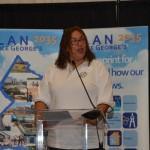
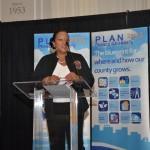
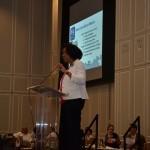
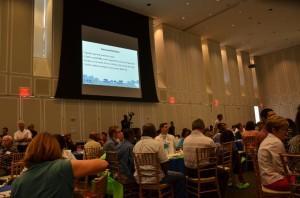
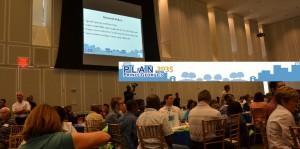
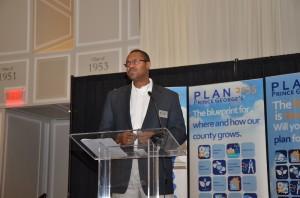
Kierre McCune
Kierre McCune, Team Plan Prince George’s 2035, presented on General Plan 2035, and discussed how county is experiencing “graying and browning” to mean that our residents are getting older and more diverse. The County’s response to millennials and baby boomers will help define county as it goes forward. Both demographics are downsizing their residences in favor of condominiums and want to be closer to transit oriented development. Two of the the biggest challenges faced by Prince George’s County are creating jobs and and the school system. Another challenge is the perception that county is crime ridden and has poor schools. The General Plan seeks to addresses these larger problems but stay within the parameters of the plan. An example would be the General Plan providing funding for safer routes to school, but certainly education and schools are not within the General Plan’s scope.
Facilitation Question: What percentage of youth in our county are considered obese or overweight. Answer was 64.1%. High rates of cancer, diabetes
What I liked about this town hall meeting is that the turnout was reflective of the state’s demographics and at my table of eight, there were 4 young people there under the age of 25, all wanting to be a part of the process. Yes! A strong concern of the young people at my table was the environment. Did you know that only 8% of streams in Prince George’s County are in good condition?
I walked away with a great experience and a desire to stay engaged in this process. I’m looking forward to the next step.
